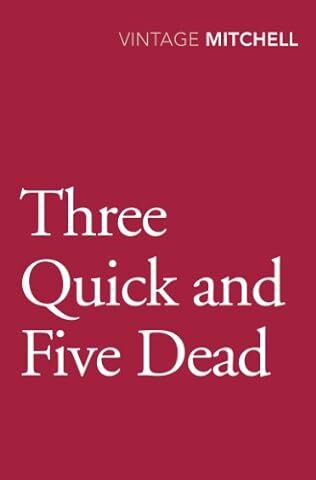Three Quick And Five Dead

A review of Three Quick and Five Dead by Gladys Mitchell – 240614
For anyone who has doggedly followed Gladys Mitchell’s long-running Mrs Bradley series in chronological order, this, the forty-first, originally published in 1968, comes as a bit of a shock. It is an accessible murder mystery, at least by her standards, and the plot follows a linear progression to a logical outcome. Nevertheless, it is a complex mystery with deeply disturbing overtones.
The body count is high – there are five murders plus, as an added extra, another more historic death which after a disinterment turns out to be murder too and is the one that convicts the murderer. Interestingly, the book does not end with the reveal of the culprit’s identity but follows on, briefly, to the trial, where a guilty verdict is reached, despite the evidence being far conclusive, and the head juror’s admission that the verdict was passed because they were convinced that the defendant had killed the first of the five women, Karen Schumann. As a vet he considered that the reaction of Laura Gavin’s new dog, Fergus, to a dog whistle was conclusive, a variation of Conan Doyle’s dog that did not bark, reinforcing the suspicions of Dame Beatrice as Mrs Bradley is now known. It is a clever touch.
Each of the five victims are garroted and then finished off with manual strangulation, each has a note pinned on their body bearing the legend “In Memoriam”, followed by a number that seems to be random, each has a connection with a certain school or the Schumanns. Each of the victims have a connection with a foreign country; Karen was of German parentage, Maria Marchado Spanish, the third an Italian maid, the fourth a French language teacher who had links with the French Resistance, and an Irish nanny.
Despite a string of similarities emerging after the first three murders, there is not enough to go on for the local police headed by Superintendent Phillips and the Yard in the form of Maisry and very occasionally Laura’s husband, Gavin, to prevent the fourth and fifth murders.
Mitchell does not hide the fact that there are really only three suspects. The first is Mrs Schumann, a dog breeder, the inheritor of her husband’s library of rare Christian tracts and histories, the mother of the first victim, Karen, and the landlady of the second victim, Maria Machrado. Then there is her hot-headed son, Oscar, a sailor and boyfriend of Maria Marchado. The third is a school teacher, an earnest man studying for a Doctor of Divinity, who uses the Schumann library and is engaged to Karen. One of the suspects, by dint of their occupation, is quickly discounted and we are left with which of the two committed the murders or whether they were working in tandem and why.
The numbers attached to the bodies are significant and a homophonic mistake over Aryan and Arion puts Dame Beatrice on the trail of early Christian heretics and allows her to work out why the heritage of the victims was significant. Although she has no firm evidence, her theory brings her to the identity of the murderer and she, with the assistance of her chauffeur, George, effects the arrest.
The rather irksome Laura Gavin, Mrs Bradley’s secretary, does much of the leg work in the private investigations while Dame Beatrice directs operations, although she is never afraid to get her hands dirty when the occasion demands.
The use of the Christian heretical tradition is a typical Mitchellism which illuminates a tale of developing psychopathic behaviour. The motivation behind the murders might make the reader wonder whether it was all worth while and while, strangely, I missed the eccentricity that permeated many of Mitchell’s books, I found it an enjoyable read, and one, even if it is somewhat atypical, anyone wanting to sample Mitchell’s work should seriously consider reading.



